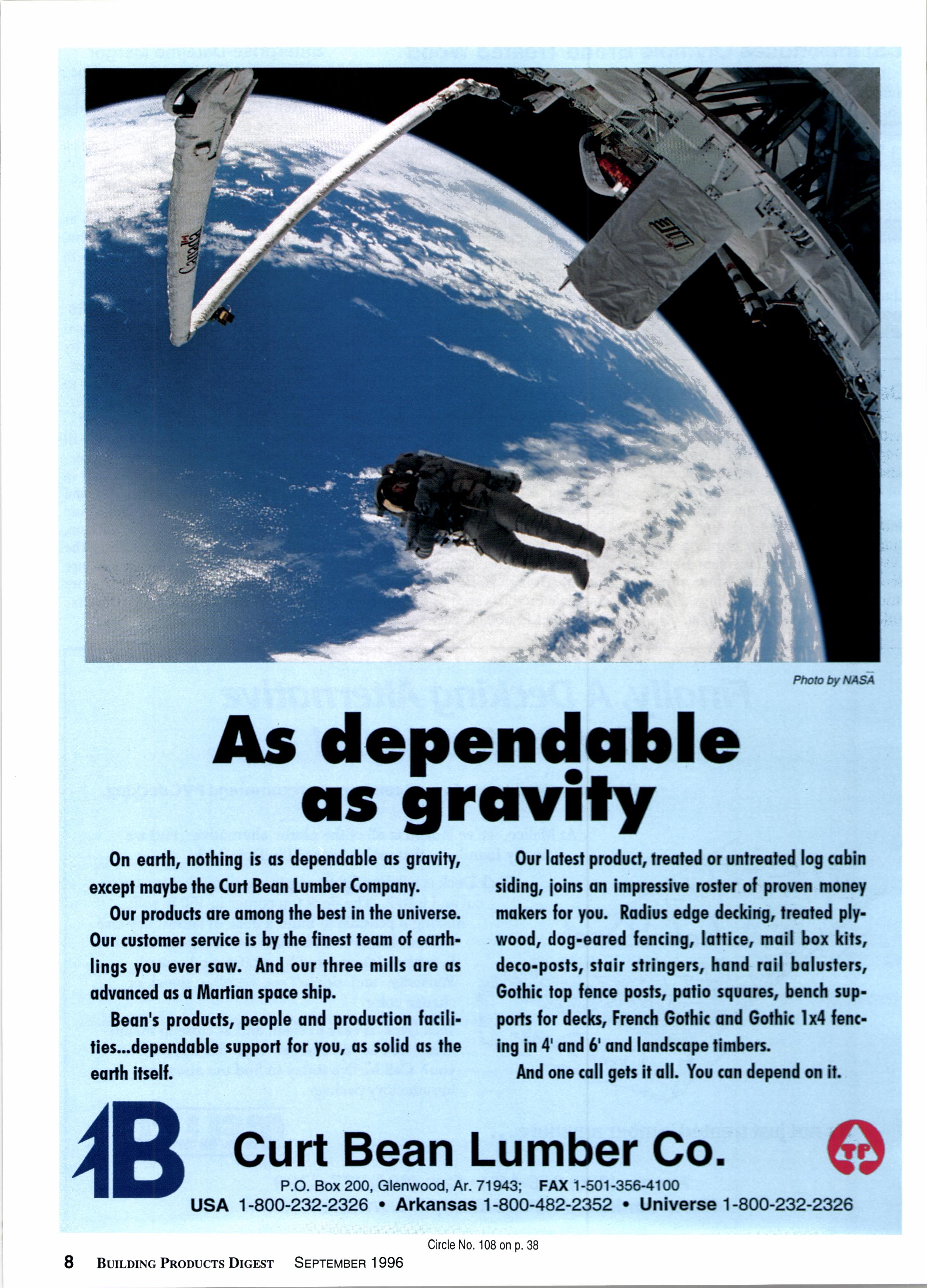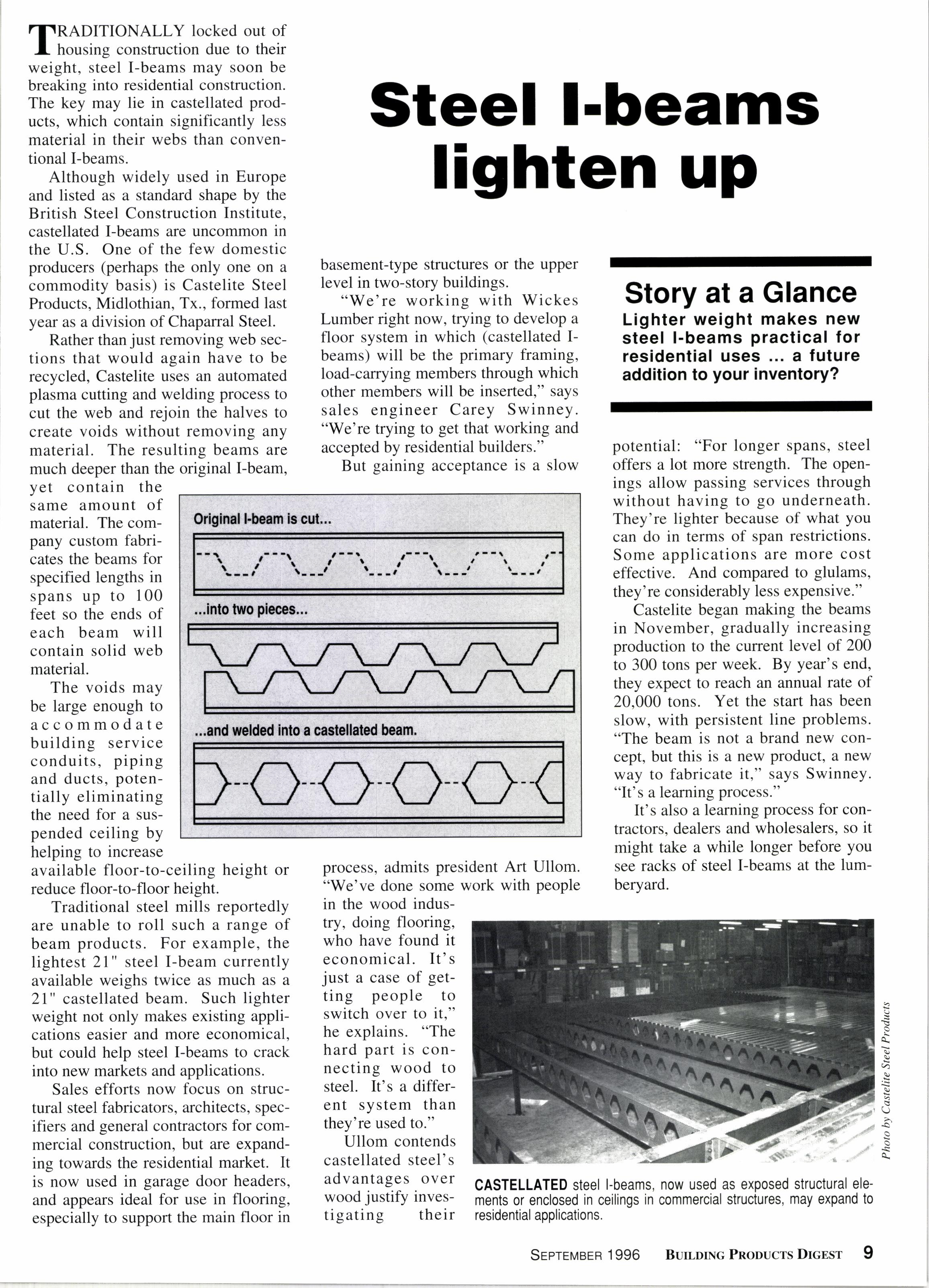
1 minute read
As de eis gfsrYr le
0n eoilh, milrlng b cr depardoble cr groullt, exrept nrybe |hc Curl Bun tunrber Comeattr
Our producfr ore ormtq lhc b6l In lh uniuene. Our o$onrr rwle b htre ffnst tcrn ol ecnh llngr you eu.l tou. And our thne rnlllr otc ot a&nnod cr o lloillon flao shlp
Beon'r produdr, people cnd pnducllon frAlf iler-depsndoble oppoil for you, or solld cr ilro eadh ltselt
0u lclrcl rnt4 rrr|rle rfir*lfqlh ddng lolnr o hpnrhl* nobr for pr b.a;+ll*fiilf # rcod, dog..md td{,efl*,lfr, {ics.posfrrrdclr rlrl{prAn+ r, eft|ophcnOlttoaH'lrriq rolt for ds*b $rrt3flGd 0-l hf tF h[ ltr f'od'd cnd lc&q.frr hdonedg*til Yccl;rlcl '
TFRADITIONALLY locked out of I housine construction due to their weight, stJel I-beams may soon be breaking into residential construction. The key may lie in castellated products, which contain significantly less material in their webs than conventional I-beams.
Although widely used in Europe and listed as a standard shape by the British Steel Construction Institute, castellated I-beams are uncommon in the U.S. One of the few domestic producers (perhaps the only one on a commodity basis) is Castelite Steel Products, Midlothian, Tx., formed last year as a division of Chapanal Steel.
Rather than just removing web sections that would again have to be recycled, Castelite uses an automated plasma cutting and welding process to cut the web and rejoin the halves to create voids without removing any material. The resulting beams are much deeper than the original I-beam, yet contain the same amount of material. The company custom fabricates the beams for specified lengths in spans up to 100 feet so the ends of each beam will contain solid web material.
The voids may be large enough to accommodate building service conduits, piping and ducts, potentially eliminating the need for a suspended ceiling by helping to increase available floor-to-ceiling height or reduce fl oor-to-fl oor height.
Traditional steel mills reportedly are unable to roll such a range of beam products. For example, the lightest 21" steel I-beam currently available weighs twice as much as a 21" castellated beam. Such lighter weight not only makes existing applications easier and more economical, but could help steel I-beams to crack into new markets and applications.

Sales efforts now focus on structural steel fabricators, architects, specifiers and general contractors for commercial construction, but are expanding towards the residential market. It is now used in garage door headers, and appears ideal for use in flooring, especially to support the main floor in










